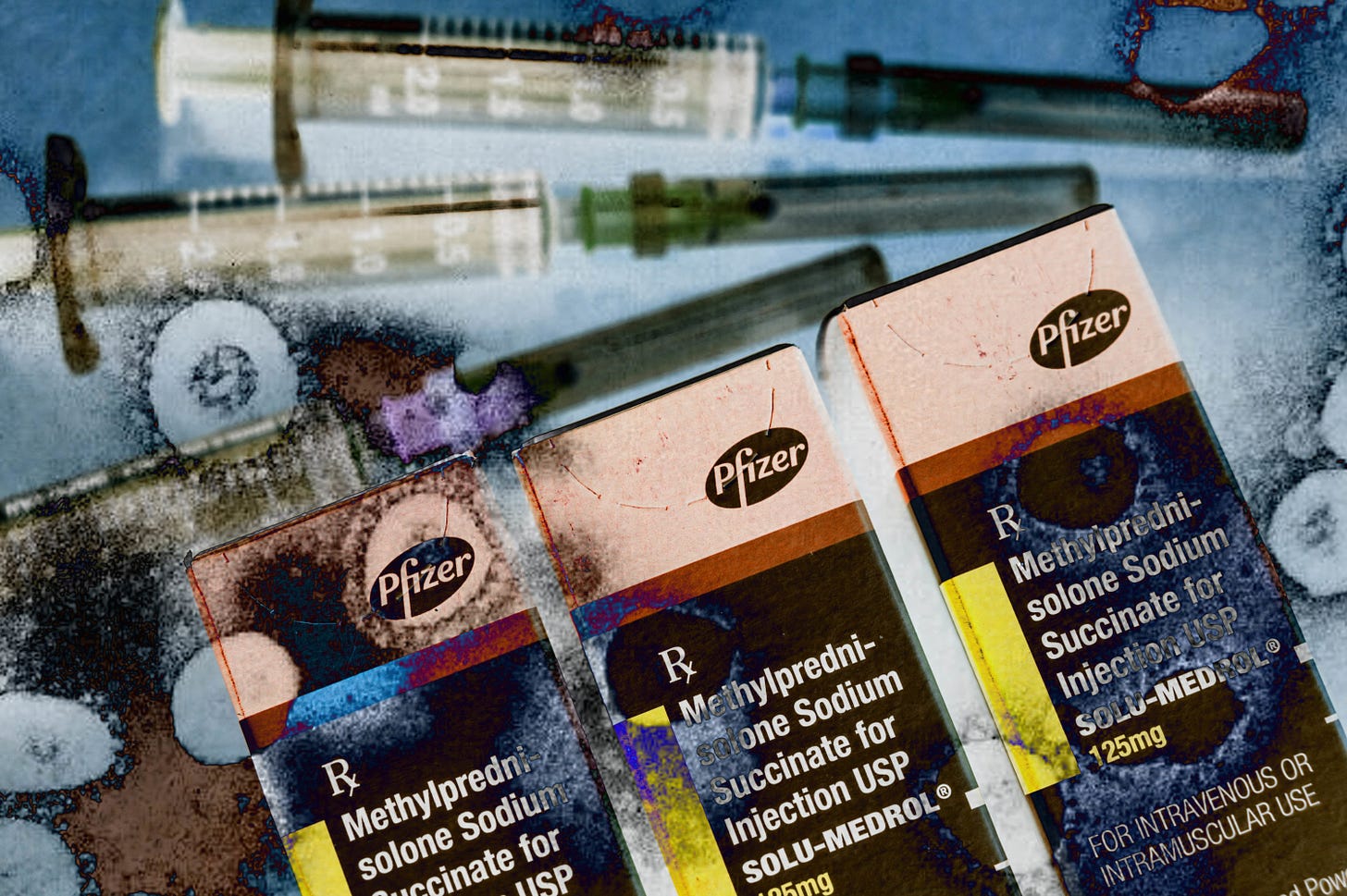
Pfizer, in partnership with the German firm BioNTech, has developed a vaccine that, according to the companies’ unpublished data, is more than 90 percent effective in preventing COVID-19. This represents a major step toward getting back to something that approaches the pre-COVID world. As with everything related to COVID, however, the near-miraculous breakthrough became immediately tangled in politics as Pfizer attempted to maintain distance from the Trump administration’s Operation Warp Speed while the administration sought to claim credit.
The truth in this dispute is apparently equivocal but ultimately perfectly clear. On the one hand Pfizer, unlike a number of other pharmaceutical firms, did not receive federal funding for research and development, opting instead to rely on its own resources. On the other hand, the company did sign a “purchase agreement” pledging to deliver 100 million doses of the vaccine at a price tag of $1.9 billion (with an option to produce an additional 500 million doses) once its product cleared Food and Drug Administration efficacy and safety checks. While this agreement would not have protected Pfizer in the event of a dud vaccine, as the purchase agreement specified the U.S. government would purchase the vaccine upon approval or emergency use authorization from the FDA, permitting the company to immediately recoup much of its development costs. The long-term value of the product for a disease that will be with humanity forever is essentially incalculable, a license for Pfizer to print money, and a reminder of how important profits are in driving innovation.
The more interesting questions are why Pfizer opted to front its own costs when the federal spigot was open, and why it raced to distance itself from Operation Warp Speed once the clinical trial findings were released. For answers to those questions, we have to review the long, sad tale of the Trump administration’s mishandling of the COVID-19 crisis over the past nine months.
Except for brief interludes, President Trump more or less fumbled pandemic policy and communications from the get-go. In service of his re-election campaign, he sought to downplay the seriousness of the threat. He has encouraged resistance to public health measures like masking and business lockdowns, leading to huge, rotating disease spikes first in the South and more recently in the Midwest. His overheated rhetoric against social distancing and restrictions on business (“Liberate Michigan!”) culminated in FBI-thwarted plots to kidnap the governors of Michigan and Virginia. Finally, his resolute refusal to adhere to, or allow those around him to adhere to, basic disease mitigation practices resulted in a mini-epidemic for the first family and dozens of members of his administration. Back in August, even Mitch McConnell started avoiding a White House that looked every day more like a scene from The Hot Zone.
Then there’s the way Trump has handled therapeutics and vaccines themselves. He has upsold unproven and quack remedies—everything from hydroxychloroquine to light to disinfectant—as health advisers looked on with hostage-video expressions on their faces. He and Alex Azar, his secretary of health and human services, signaled repeatedly that they wanted to seize control of the agencies and protocols that guide the development and approval of vaccines and therapeutics. Trump openly misled the public about when a vaccine was likely to be available, contending that the country was “rounding the corner” on the disease even though an effective and broadly available vaccine was, and remains, months away, and infections and hospitalizations are exploding across the country. In short, he has treated every aspect of COVID-19 the way he treats everything else, as subject to his patented “truthful hyperbole”—minus the truth. Is it really any wonder that Pfizer avoided the embrace of Operation Warp Speed and did everything it could to distance itself when it came time to persuade a wary public to accept its product as effective and safe? It would be a disservice to the public and business malpractice to do otherwise.
In a time when capitalism is under attack from the left and the right, this highly promising vaccine is a reminder of what profit-driven markets are capable of. Pfizer chose to go it alone and the company’s reasoning is worth consideration. In an interview, the CEO of Pfizer emphasized that he wanted to liberate his scientists from bureaucracy, that he didn’t want to deal with the strings that money would come with, and that he wanted to keep Pfizer out of politics. In his approach we glean two insights: the importance of forward-thinking corporate leadership and the critical difference between government as a customer and government as an investor.




